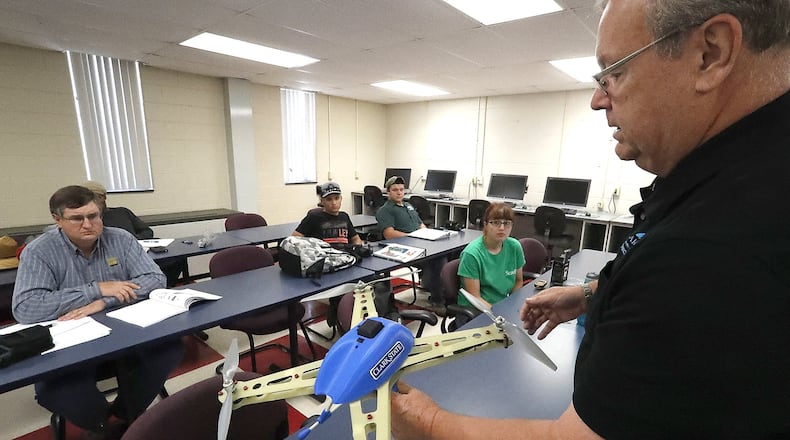As part of the agreement, C2A3 will also become a national hub for two-year agriculture education to develop programing and curriculum that can be replicated across the country.
“C2A3 schools will increase student interest in agriculture, natural resources and conservation, with a focus on preparing students for USDA jobs,” said Astrid Martinez, director of the Conservation Planning and Technical Assistance division with the USDA-NRCS, who has been instrumental in establishing the agreement. “This is an important step in developing the next generation of agricultural leaders.”
Clark State offers certificates and associate degree programs in precision agriculture and precision agriculture technician. These programs cover topics including soil science and fertility, pests, yield mapping, remote sensing, geographic information and data analysis that prepare students for careers such as farm operations, agriculture engineers, irrigation technicians and agronomists.
“As agriculture increasingly relies on technology, the demand for professionals skilled in implementing geospatial technologies like GPS and GIS continues to grow,” said Arly Drake, associate professor of agriculture. “Clark State’s precision agriculture program provides these critical skills, promoting efficient resource use and contributing to sustainable farming practices.”
Proposed projects as part of the agreement include artificial intelligence and precision livestock; crop drainage and irrigation management; soil quality, field and pasture renovation and cover crops; water quality, pond and wetland management; silvopasture management; and urban agriculture.
It will also create student internship and leadership opportunities to network with USDA employees, and it will cover travel expenses for faculty and students to attend an annual conference.
“The rapid growth of technology in agriculture requires colleges to be nimble and respond quickly to changes within the industry,” said Tracy Kruse, C2A3 executive director. “This alliance will support colleges and provide them the tools to rapidly respond to the workforce needs within agriculture.”
Drake agreed, saying agriculture is quickly growing and adopting new technologies each year.
“Clark State is proud to be at the cutting-edge of initiatives that support innovation in farming and allow us to cultivate a sustainable future for agriculture in Ohio and beyond. By using real-life examples of conservation in classroom and land labs in our program, students can bridge the gap between theoretical knowledge and practical application and be well-prepared for careers in agriculture,” she said.
About the Author

